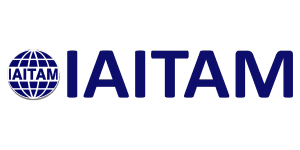The Inter-Dependency of ITAM & Data Management

Data security is dependent on lifecycle management policies, processes, and compliance to procedures. Digital transformation is a strategic initiative that requires organizational discipline to fundamental software asset management practices. The evaluation and modernization of IT asset lifecycle management processes essentially enables an organization to compete within their vertical market. When done right, it reduces the costs of IT operations and enhances the security of the businesses data that essentially creates value by continuously optimizing the organization’s technology investments.
As the old adage goes, “you can’t have SAM without HAM“! This is where the data is created, stored, consumed, shared, and managed … within their IT assets. Consequently, recognizing that data is the lifeblood of all businesses, it’s equally important to protect both personal as well as corporate information. Cloud migrations are intended to extend the value of software licensing agreements and improve data security, which in turn increases the criticality of managing the lifecycle of all mobile and other hardware assets. From the virtual glasshouse through servers, tablets, laptops, and desktops, documentation and management of all data-bearing devices has become essential in today’s operating environment.
Far beyond basic inventory controls, centralization and automation of IT asset management enables greater productivity as well as profitability. If the Executive, Officers, and even the Board of Directors fail to comprehend the criticality of digital transformation relative to the intrinsic inter-dependability of asset management, their investors, customers, and employees are at significant risk. Alignment of their technology investments in hardware and software licensing rights, entitlements, and privileges are required for an organization to survive in today’s global circular economy and thrive in a sustainable manner.
Data Management is crucial for business operations, enabling efficient data collection, processing, and usage. It’s foundational for leveraging artificial intelligence and gaining competitive advantages. Proper data management ensures reliable, accurate data for informed decision-making, operational efficiency, and strategic planning.
To effectively & efficiently manage any enterprise in today’s hyper competitive market, organizations are being forced to measure, report, and ultimately manage their distributed data-bearing devices throughout their entire lifecycle and beyond. Data breaches can be crippling, if not life threatening. Maintaining certificates of data erasure and device destruction is an essential organizational discipline. Harvesting and cascading IT assets has become an organizational art form that requires assistance & support from strategic business partners. As a result, “starting with the end in mind” enables negotiations with those providers to produce long-term trusted working relationships that will essentially protect the organization’s most valuable commodity ~ your proprietary data!
In summary, digital transformation is commonly referred to as IT modernization and/or digital optimization that ultimately is the basis for new and emerging digital business models. According to Gartner, this process of exploiting digital technologies and supporting capabilities of creating new business models has emerged as a distinct competitive advantage and therefore still dependent on sound and secure asset management practices. This is why certified IT asset managers are more valuable to their organization than ever before based on the fact that they are the only trusted source to answer who, what, when, where, why, and how a datebearing device is being used … or not in the organization. The degree to which organizations value their intellectual property, personal, and customer data is reflected in the disciplined practices encapsulating the collection, processing, and maintenance of data in a secure and efficient manner that results in continuous improvement of their business outcomes.
